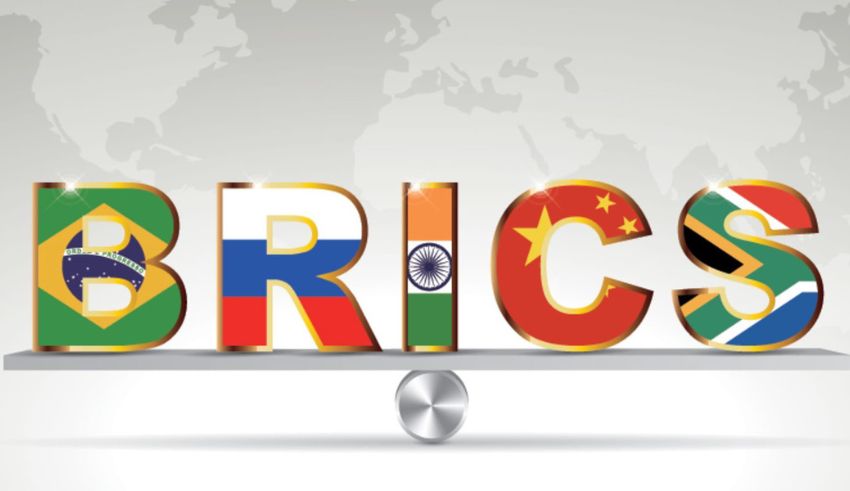

(C) BRICS Twitter
In recent few years, the BRICS grouping- consisting of Brazil, Russia, India, China and South Africa, has gained remarkable attention on the global stage. As of late, a growing number of Southeast Asian countries are expressing their wish to join this bloc. The latest to show interest in it is Malaysia, and Thailand with Prime Minister Anwar Ibrahim and Srettha Thavisin announcing the country’s decision to join BRICS. This move, along with similar emotions from other ASEAN nations, raises the concern: Why are these nations keen on becoming part of BRICS?
Diversifying Economic Options
One of the main reasons for this surging interest is the desire to diversify economic options. As Dr. Joseph Liow from Nanyang Technological University in Singapore pointed out, these countries are intrigued towards BRICS due to its “collective potential.” By aligning with BRICS, Southeast Asian countries can explore new opportunities for trade, investment and infrastructure financing, especially from China and India. This diversification is important for countries looking to reduce their dependence on traditional Western markets and financial institutions.
Enhancing Global Standing
Another stimulating factor is the opportunity to upgrade their global standing. Leaders like Malaysia’s Anwar Ibrahim see BRICS membership as a way to raise their country’s profile on the global stage. Dr. Alan Chong from Singapore’s Rajaratnam School of International Studies describes BRICS as an “alternative leadership circuit” in global governance. Countries can leverage their international position to appeal to domestic electorates and gain greater influence in global affairs, by joining this group.
Economic Cooperation and Investment
For nations like Indonesia, the possibility for economic cooperation within BRICS is highly appealing. Executive Director of the think tank Centre of Economics and Law Studies (CELIOS) in Indonesia, notes that ASEAN countries are swayed by the possibility of cooperation in investment, trade and infrastructure financing. The combined economies of BRICS members represent a substantial portion of the world economy, making the bloc an attractive partner for countries looking to skyrocket their economic growth.
Potential Risks and Overdependence on China
However, joining BRICS is not without risks. One vital concern is the potential overdependence on China. With China’s current economy facing challenges like slowing domestic demand and property crisis, overreliance on Chinese investment and trade could pose risks to ASEAN countries. Also, geopolitical tensions, such as the South China Sea conflict and the U.S.- China trade war could complicate relationships within the BRICS architecture.
Internal Politics and Bilateral Relationships
Another critical challenge is the internal Politics within BRICS itself. The BRICS bloc includes countries with fractious bilateral relationships, such as China and India, or Saudi Arabia and Iran. These political synergy could impede the collective potential of BRICS and complicate the decision making process. Dr. Liow underscores that these internal Politics could be a major setback, making it difficult for the bloc to fully realize its capability.
Strategic Calculations and Future Prospects
Despite all these concerns, the strategic calculations of Southeast Asian countries suggest that the potential benefits of joining BRICS outlines the risks. For nations like Singapore and Philippines, their decisions will likely be influenced by their relationships with BRICS nations and their strategic interests. As Bhima Yudhistira pointed out, countries like Singapore may already see themselves as benefiting from their current economic ties without even needing to join BRICS formally.
The growing interest of Southeast Asian countries in joining BRICS reflects their strategic calculations to broaden economic options and enhance their global standing. While concerns about overdependence on China and internal politics within BRICS are legitimate, the potential economic benefits and opportunities for international cooperation make this move an attractive prospect. As BRICS continues to expand, it will be intriguing to observe how these dynamics evolve and what new opportunities and challenges arise for its members.
The fifth prisoner exchange took place on 6 May 2025 between Russia and Ukraine involving 205 prisoners and it is…
Established in the year 1921 and it still continues to showcase the legacy of this game through generations. This ‘Emperor’s…
The NBA Playoffs of 2025 would have much perdition during the matches of the second round. In the East, the…
Jimmy O.Yang, the Asian standup comedian established his name in the international stage and he is more popular among the…
Bill Gates of the Bill & Melinda Gates Foundation declared during the Philanthropy Asia Summit on May 5, 2025 that…
The game changer of the Netflix streaming is the South Korean nail biting survival thriller web series “Squid Game” and…
This website uses cookies.
Read More